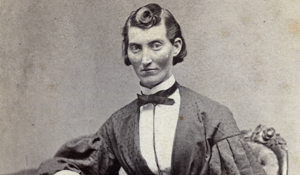Women at War

It has been estimated that some 400 women concealed their identities and donned uniforms, serving as soldiers on both sides of the conflict during the Civil War. In addition to the usual cursory medical examinations and ill-fitting uniforms, Frances Clayton’s slim build and angular features made it possible for her to pass as a man and accompany her husband to the front. They fought together until his death at the Battle of Murfreesboro (Stones River), December 31, 1862 to January 2, 1863. After she left the army, Clayton’s story appeared in several newspapers.
It has been estimated that some 400 women concealed their identities and donned uniforms, serving as soldiers on both sides of the conflict during the Civil War. In addition to the usual cursory medical examinations and ill-fitting uniforms, Frances Clayton’s slim build and angular features made it possible for her to pass as a man and accompany her husband to the front. They fought together until his death at the Battle of Murfreesboro (Stones River), December 31, 1862 to January 2, 1863. After she left the army, Clayton’s story appeared in several newspapers.